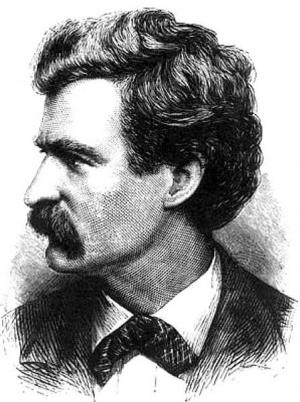The Little Book of the Flag
Nonfiction, Religion & Spirituality, New Age, History, Fiction & Literature| Author: | Eva March Tappan | ISBN: | 9781465604422 |
| Publisher: | Library of Alexandria | Publication: | March 8, 2015 |
| Imprint: | Language: | English |
| Author: | Eva March Tappan |
| ISBN: | 9781465604422 |
| Publisher: | Library of Alexandria |
| Publication: | March 8, 2015 |
| Imprint: | |
| Language: | English |
More than three hundred years ago a little sailing vessel set out from Holland, crossed the Atlantic Ocean, and followed down our coast from Greenland. Its captain, Henry Hudson, was in search of a quick and easy route to Asia, and when he entered the mouth of the river that is named for him, he hoped that he had found a strait leading to the Asiatic coast. He was disappointed in this, but the Indians welcomed him, the mountains were rich in forests, and the ground was fertile. "It is the most beautiful land in all the world," declared the enthusiastic navigator. Henry Hudson was an Englishman, but he sailed in the employ of the Dutch East India Company, and soon the flag of this Company was well known along the Hudson River. It was the old flag of Holland, three horizontal stripes, of orange, white, and blue, with the initials of the Company on the white stripe. Hudson had not found a new route to Asia, but he had opened the way for the fur-trade. In a few years the Dutch had established trading-posts as far north as Albany. They had also founded a city which we call "New York," but which they named "New Amsterdam." So it was that in 1609 the Dutch flag first came to the New World. Nearly thirty years after the voyage of Henry Hudson, a company of Swedes made a settlement on the Delaware River. This had been planned by the great Gustavus Adolphus, King of Sweden. "That colony will be the jewel of my kingdom," he said; but the "Lion of the North" was slain in battle, and his twelve-year-old daughter Christina had become queen. That is why the loyal Swedes named their little fortification Fort Christiana, and over it they raised the flag of their country, a blue banner with a yellow cross. In course of time the Swedes were overpowered by the Dutch, and then the Dutch by the English; so that before many years had passed, the only flag that floated over the "Old Thirteen" colonies was that of England. This was brought across the sea by the settlers of our first English colony, Jamestown, in Virginia. Moreover, they had the honor of sailing away from England in all the glories of a brand-new flag made in a brand-new design. The flag of England had been white with a red upright cross known as "St. George's Cross"; but a new king, James I, had come to the throne, and the flag as well as many other things had met with a change. James was King of Scotland by birth, and the Scotch flag was blue with the white diagonal cross of St. Andrew. When James became King of England, he united the two flags by placing on a blue background the upright cross of St. George over the diagonal cross of St. Andrew; and he was so well pleased with the result that he commanded every English vessel to bear in its maintop this flag, "joined together according to the form made by our own heralds," the King declared with satisfaction. It was the custom at that time to call "ancient" whatever was not perfectly new, and therefore the flag used before James became king was spoken of as the "ancient flag," while the new one became the "King's Flag" or the "Union Jack." This change was made in the very year when the grant for Virginia was obtained, and therefore the little company of settlers probably sailed for America with the "King's Flag" in the maintop and the "ancient flag" in the foretop.
More than three hundred years ago a little sailing vessel set out from Holland, crossed the Atlantic Ocean, and followed down our coast from Greenland. Its captain, Henry Hudson, was in search of a quick and easy route to Asia, and when he entered the mouth of the river that is named for him, he hoped that he had found a strait leading to the Asiatic coast. He was disappointed in this, but the Indians welcomed him, the mountains were rich in forests, and the ground was fertile. "It is the most beautiful land in all the world," declared the enthusiastic navigator. Henry Hudson was an Englishman, but he sailed in the employ of the Dutch East India Company, and soon the flag of this Company was well known along the Hudson River. It was the old flag of Holland, three horizontal stripes, of orange, white, and blue, with the initials of the Company on the white stripe. Hudson had not found a new route to Asia, but he had opened the way for the fur-trade. In a few years the Dutch had established trading-posts as far north as Albany. They had also founded a city which we call "New York," but which they named "New Amsterdam." So it was that in 1609 the Dutch flag first came to the New World. Nearly thirty years after the voyage of Henry Hudson, a company of Swedes made a settlement on the Delaware River. This had been planned by the great Gustavus Adolphus, King of Sweden. "That colony will be the jewel of my kingdom," he said; but the "Lion of the North" was slain in battle, and his twelve-year-old daughter Christina had become queen. That is why the loyal Swedes named their little fortification Fort Christiana, and over it they raised the flag of their country, a blue banner with a yellow cross. In course of time the Swedes were overpowered by the Dutch, and then the Dutch by the English; so that before many years had passed, the only flag that floated over the "Old Thirteen" colonies was that of England. This was brought across the sea by the settlers of our first English colony, Jamestown, in Virginia. Moreover, they had the honor of sailing away from England in all the glories of a brand-new flag made in a brand-new design. The flag of England had been white with a red upright cross known as "St. George's Cross"; but a new king, James I, had come to the throne, and the flag as well as many other things had met with a change. James was King of Scotland by birth, and the Scotch flag was blue with the white diagonal cross of St. Andrew. When James became King of England, he united the two flags by placing on a blue background the upright cross of St. George over the diagonal cross of St. Andrew; and he was so well pleased with the result that he commanded every English vessel to bear in its maintop this flag, "joined together according to the form made by our own heralds," the King declared with satisfaction. It was the custom at that time to call "ancient" whatever was not perfectly new, and therefore the flag used before James became king was spoken of as the "ancient flag," while the new one became the "King's Flag" or the "Union Jack." This change was made in the very year when the grant for Virginia was obtained, and therefore the little company of settlers probably sailed for America with the "King's Flag" in the maintop and the "ancient flag" in the foretop.















